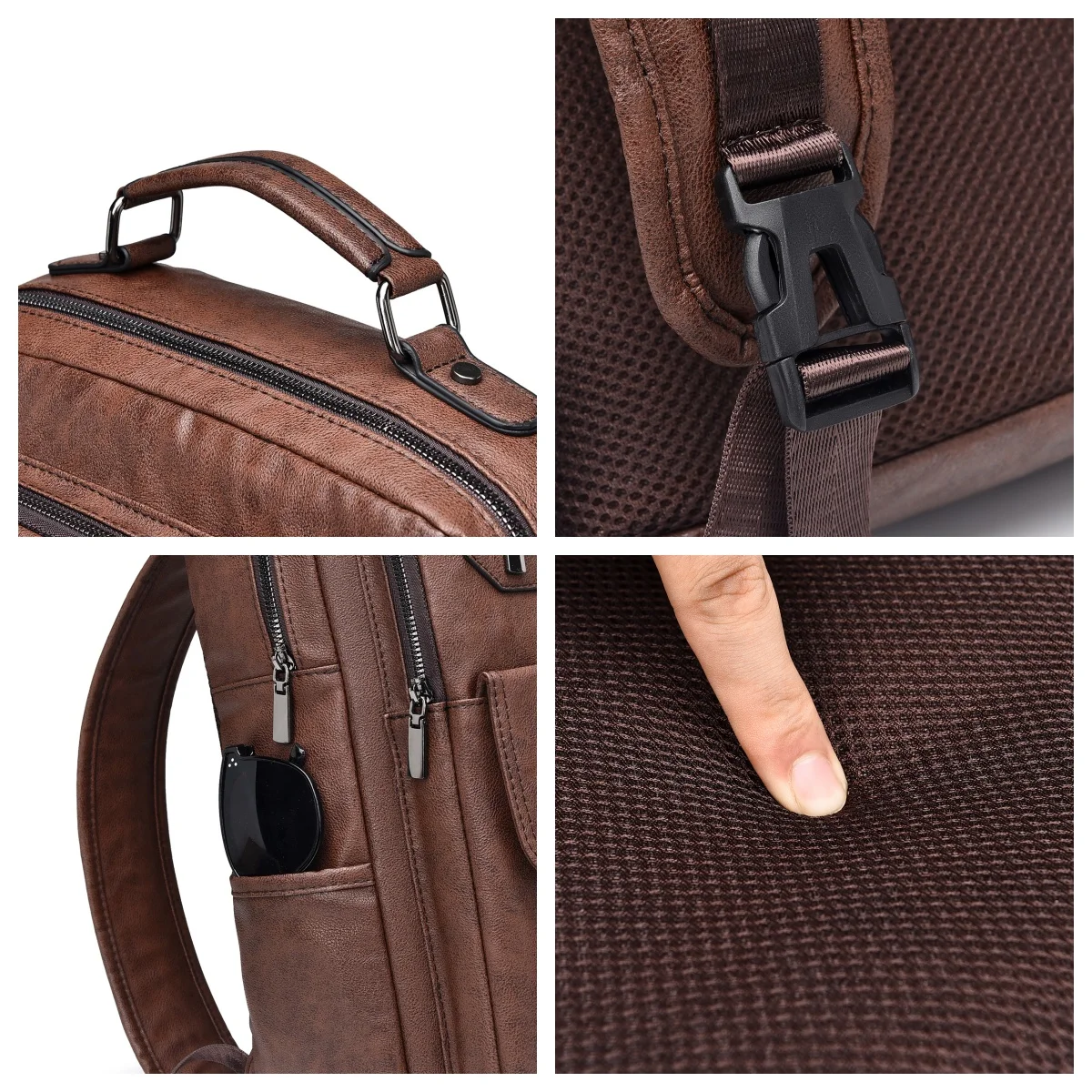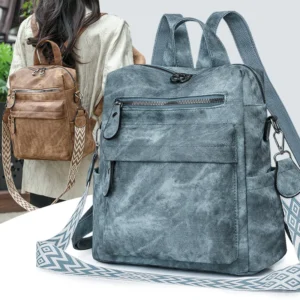Why the Right Backpack Size Matters for Your Comfort
The backpack you choose is more than just a carrying solution—it’s an extension of your body during travel, hiking, or daily commutes. When properly fitted, a backpack distributes weight evenly across your strongest muscle groups, allowing for comfortable movement and reduced strain. However, when poorly sized, even the highest quality backpack can cause significant discomfort and potential injury.
Improper backpack fit creates immediate and long-term consequences:
– Shoulder pain from straps bearing too much weight
– Lower back strain from improper weight distribution
– Reduced mobility due to restricted movement
– Neck and upper back tension from compensating for an unbalanced load
– Increased energy expenditure and faster fatigue
Generic sizing (S/M/L) only tells part of the story. Your unique body proportions—torso length, hip circumference, shoulder width, and overall frame—dictate how a backpack actually fits and functions on you. Studies suggest that proper weight distribution can reduce perceived exertion and fatigue by up to 25-30% during extended carrying periods.
At Summit Carry, our backpacks feature multiple adjustment points designed to accommodate various body types. Understanding how backpack design affects posture is crucial for maintaining comfort during extended wear. Equally important is knowing how to maintain your pack, as leather conditioning and waterproofing practices ensure your perfectly-fitted backpack remains comfortable for years.
In this comprehensive guide, we’ll walk you through measuring your body correctly, understanding key backpack components, making proper adjustments, and finding solutions for your specific body type. By the end, you’ll have the knowledge to select and adjust a backpack that feels like it was custom-made for you.
Essential Body Measurements for Perfect Backpack Fit
Measuring Your Torso Length – The Critical Dimension
Torso length is the single most crucial measurement for backpack fit. This dimension—not your height—determines the appropriate backpack frame size. An incorrect torso fit can cause the weight to sit too high or too low, creating pressure points and instability.
To measure your torso length:
- Find your C7 vertebra (the bony bump at the base of your neck when you tilt your head forward)
- Locate your iliac crest (the top of your hip bones) by placing your hands on your hips with thumbs pointing toward your spine
- Ask a friend to measure the distance from your C7 vertebra straight down to the imaginary line connecting your thumbs on your iliac crest
- Record this measurement in inches or centimeters
Typical torso length ranges and corresponding backpack sizes:
– Extra Small (XS): Less than 16 inches (40.6 cm)
– Small (S): 16-17 inches (40.6-43.2 cm)
– Medium (M): 18-19 inches (45.7-48.3 cm)
– Large (L): 20-21 inches (50.8-53.3 cm)
– Extra Large (XL): 22+ inches (55.9+ cm)
Understanding your torso measurement helps prevent back pain by ensuring proper load placement along your spine.
Hip Circumference Measurement for Proper Hipbelt Fit
Your hips—not your shoulders—should carry 70-80% of your backpack’s weight. To ensure proper hipbelt fit:
- Find your iliac crest (the top ridge of your hip bones)
- Measure around your body at this point, keeping the measuring tape level
- This measurement determines your ideal hipbelt size range
Unlike clothing sizes, hip circumference for backpack fitting focuses on bone structure rather than waist size. The hipbelt should wrap comfortably around your iliac crest, not your natural waistline. Most hipbelts offer 3-6 inches (7.6-15.2 cm) of adjustment range, but ensuring your measurement falls within a particular model’s range is essential for comfort.
When properly fitted, your hipbelt will transfer the majority of weight to your legs—your body’s strongest load-bearing muscles—rather than straining your shoulders and back.
Shoulder and Chest Measurements for Strap Compatibility
While less critical than torso length, shoulder width and chest circumference affect how shoulder straps and sternum straps fit.
For shoulder width:
1. Measure from the base of one side of your neck to the other across your shoulders
2. This helps determine if standard shoulder straps will sit properly without pinching or slipping
For chest circumference:
1. Measure around your chest at its widest point, typically across the nipple line
2. Keep the measuring tape level and breathe normally
3. This measurement helps determine sternum strap length and positioning
These measurements are particularly important if you have broader shoulders, a larger chest, or a narrower frame than average. When shopping for leather travel backpacks, these dimensions ensure the shoulder harness will distribute weight comfortably without pressure points.
Understanding Backpack Fit Components
Backpack Frame and Torso Length Compatibility
The backpack frame is the structural element that determines how weight transfers to your body. Most modern backpacks use internal frames—supportive structures built inside the pack—rather than external frames mounted outside the bag.
Frame systems fall into two categories:
Fixed-length frames: These have a non-adjustable back panel length. You must select the specific size that matches your torso measurement. These tend to be lighter and simpler but offer less flexibility.
Adjustable suspension systems: These feature mechanisms to lengthen or shorten the effective torso length of the pack. Look for:
– Sliding shoulder harnesses that move up and down
– Ladder-lock systems with multiple anchor points
– Velcro adjustment panels
When selecting a backpack, especially a large leather backpack, verify that your torso measurement falls within the pack’s range. A properly fitted frame places the hipbelt directly on your iliac crest while allowing the shoulder straps to wrap comfortably over your shoulders without gaps or pinching.
Load-Supporting Components and Their Function
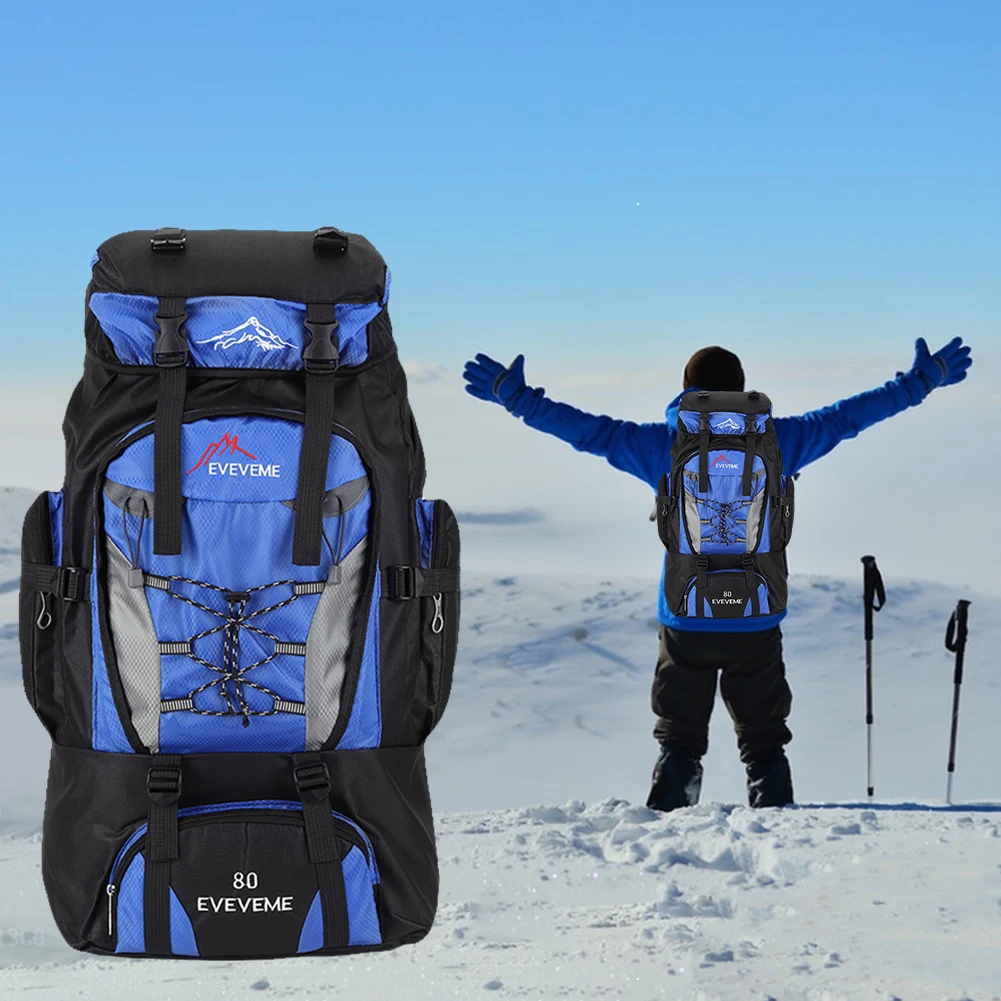
Modern backpacks consist of several ergonomic components working together:
Hipbelt: The primary load-bearing component that transfers 70-80% of pack weight to your hips and legs. A proper hipbelt:
– Sits directly on your iliac crest (hip bones)
– Wraps around without gaps or pressure points
– Provides adequate padding at contact points
– Tightens securely without restricting movement
Shoulder Straps: These stabilize the pack and carry the remaining 20-30% of weight. Effective shoulder straps:
– Contour to your shoulders without gaps
– Distribute pressure across the width of your shoulders
– Include padding that extends from the pack to just past your collarbone
– Allow full arm movement without restriction
Load Lifters: Small straps connecting the top of the shoulder straps to the frame. When properly adjusted at approximately 45°, they:
– Pull the pack’s weight closer to your back
– Prevent the pack from pulling backward
– Reduce strain on shoulder muscles
Sternum Strap: A horizontal strap connecting the shoulder straps across your chest that:
– Prevents shoulder straps from sliding outward
– Improves stability during movement
– Distributes pressure across your chest
Lumbar Pad: The cushioned area at the base of the back panel that:
– Creates proper spacing for airflow
– Provides additional support for your lower back
– Helps position the pack correctly on your spine
Each component must work in harmony with your specific body dimensions to create a comfortable carrying experience.
Adjusting Your Backpack for Your Body Type
Setting the Correct Height and Hipbelt Position
The foundation of proper backpack adjustment begins with correct placement on your body:
- Loosen all straps (shoulder straps, load lifters, hipbelt, compression straps)
- Load your pack with a realistic weight (10-15 pounds for testing)
- Put the pack on and position the hipbelt directly on your iliac crest
- Tighten the hipbelt firmly but comfortably so it doesn’t slip down
- Check that the padded sections of the hipbelt cover your hip bones without extending too far forward
The back panel should follow the natural curve of your spine without forcing you into an unnatural posture. If your backpack has an adjustable torso length, set it so that the shoulder straps attach to the pack at approximately the same height as the top of your shoulders.
Proper leather conditioning helps ensure that leather backpacks maintain their shape and proper fit over time. As leather breaks in, it conforms to your body, often creating an even more personalized fit.
Fine-Tuning Shoulder Straps and Load Lifters
With the hipbelt properly positioned:
- Pull the shoulder straps down and back, snug but not tight
- Check the anchor points where straps meet the pack—they should sit 1-2 inches below the top of your shoulders
- Verify that the straps follow the contour of your shoulders without gaps
- Adjust load lifters to create a 45° angle between the straps and the pack
- Tighten load lifters until you feel the pack pull slightly closer to your upper back
Properly adjusted shoulder straps should not bear significant weight but rather stabilize the pack. You should be able to slide two fingers between the straps and your shoulders. For the best selection of properly designed packs, explore our men’s leather backpack collection with ergonomic shoulder strap designs.
Optimizing Stability with Sternum Strap and Compression
The final adjustments enhance stability and balance:
- Position the sternum strap approximately 1-2 inches below your collarbone
- Tighten it just enough to pull the shoulder straps inward slightly
- Check that breathing remains comfortable and unrestricted
- Adjust any compression straps to secure and stabilize the load inside the pack
Test your adjustments by walking around, bending forward, and making light jumping movements. The pack should move with you without shifting or bouncing excessively. If the load feels unstable, revisit your compression strap adjustments or consider redistributing weight within the pack.
Body Type-Specific Fit Considerations
Backpack Fit for Shorter Torsos and Petite Frames
Individuals with shorter torsos (under 16 inches/40.6 cm) often struggle with standard backpack dimensions. For petite frames:
- Look for packs with smaller back panels that won’t extend past your mid-back
- Seek narrower shoulder harnesses (typically 2-2.5 inches/5-6.4 cm wide) that won’t dig into your neck
- Choose appropriately sized hipbelts that can tighten enough for your hip circumference
- Consider a shorter overall pack height to prevent the bag from extending too far above your head
- Select smaller volume packs (15-50 liters) proportional to your frame
Avoid the common mistake of wearing a pack that rides too low, causing the hipbelt to sit on your buttocks rather than your hip bones. Our mini leather backpack collection offers excellent options for those with shorter torsos.
Optimizing Fit for Taller Individuals
Those with longer torsos (over 20 inches/50.8 cm) face unique challenges:
- Seek packs with extended torso lengths or fully adjustable suspension systems
- Look for longer shoulder straps that accommodate broader shoulders
- Choose hipbelts with longer padding that properly wraps around larger hip structures
- Consider taller, slimmer pack designs that align with a longer back
- Ensure load lifters can adequately adjust to maintain proper pack position
Tall individuals often experience “bottoming out,” where standard packs sit too high, causing the hipbelt to ride above the iliac crest. Always verify that a pack’s maximum torso adjustment accommodates your full measurement.
Gender-Specific Design Considerations
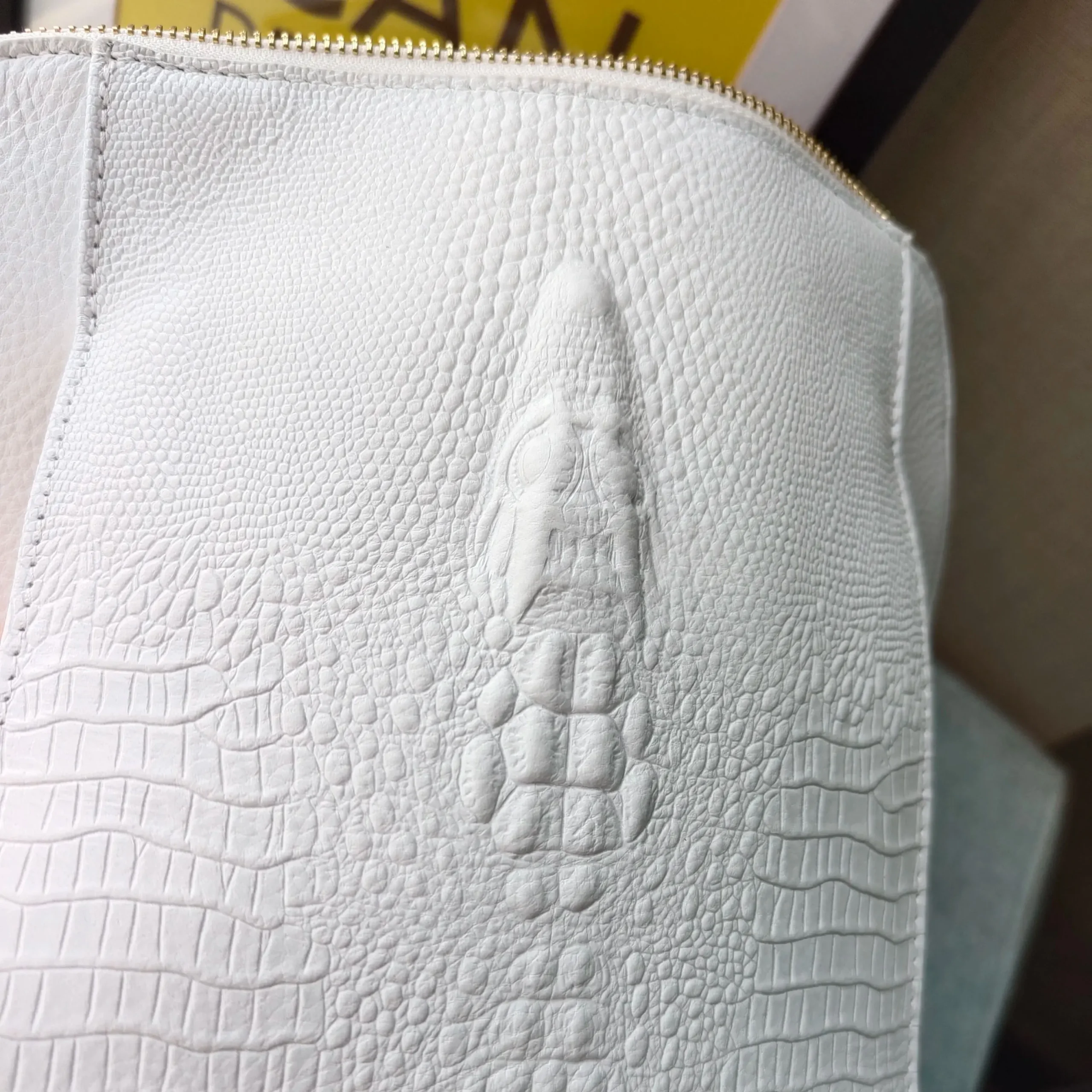
Anatomical differences between body types often influence backpack design:
Women-specific designs typically feature:
– S-curved shoulder straps that contour around chest tissue
– Shorter torso lengths to accommodate typically shorter female torsos
– Conical-shaped hipbelts that account for wider hip angles
– Narrower shoulder harnesses for narrower shoulders
Men’s/unisex designs typically include:
– Straighter shoulder straps
– Longer torso ranges
– Straight or less contoured hipbelts
– Wider shoulder harnesses
While these designs reflect average anatomical differences, what matters most is fit—not the gender label. Many women with straighter torsos find men’s packs more comfortable, while men with narrower shoulders might prefer women’s models. Our women’s leather backpack collection considers these anatomical differences while maintaining versatile fit options.
Special Considerations for Different Body Shapes
Adjustments for Broader Shoulders and Narrower Hips
Individuals with broad shoulders but narrower hips often struggle with standard pack designs:
- Look for packs with wider-set shoulder strap anchors
- Consider wider shoulder straps (2.5-3 inches/6.4-7.6 cm) that distribute pressure over a larger area
- Use the sternum strap to prevent shoulder straps from slipping outward
- Seek hipbelts with greater adjustment range to secure properly on narrower hips
- Consider adding foam inserts to hipbelts for improved grip on narrower hip structures
For this body type, proper load lifter adjustment becomes critical to prevent the pack from pulling away from your upper back and creating excessive pressure on your shoulders.
Adaptations for Fuller Figures and Larger Waistlines
For those with fuller figures:
- Look for hipbelts with extended padding and longer straps
- Consider models with buckles that can be centered or offset for better fit
- Position the hipbelt slightly higher than the iliac crest if necessary for comfort
- Ensure shoulder straps have adequate width and padding to prevent digging
- Adjust the sternum strap height for comfort across the chest
The key is finding a balance between secure fit and comfortable pressure distribution. Many premium backpacks offer hipbelt extenders as accessories, which can significantly improve comfort for fuller figures.
Addressing Fit Issues for Athletic and Muscular Builds
Athletic or muscular individuals—especially those with V-shaped torsos—often face fit challenges:
- Look for highly adjustable suspension systems that accommodate varying proportions
- Consider packs with independent shoulder strap adjustments
- Ensure adequate clearance around arm openings for developed shoulder muscles
- Look for hipbelts with firmer padding that won’t compress fully under tension
- Adjust load lifters carefully to balance the load despite torso taper
For those with muscular builds, leather rucksack sizing may offer alternative carrying solutions with different strap configurations that better accommodate developed shoulders and backs.
Troubleshooting Common Fit Problems
Diagnosing and Resolving Pressure Points and Pain
If you experience discomfort with your backpack, use this troubleshooting guide:
Shoulder pain or numbness:
– Loosen shoulder straps—they should not bear significant weight
– Check hipbelt position—it may be riding too low
– Adjust load lifters to bring weight closer to your back
– Verify torso length—the pack may be too short or too long
Lower back pain:
– Reposition hipbelt directly on iliac crest
– Check pack loading—heavy items should be close to your back
– Adjust back panel to better match your spine’s curve
– Consider additional lumbar padding if available
Hip bruising or pressure points:
– Loosen an over-tightened hipbelt
– Reposition hipbelt to sit on the iliac crest, not below it
– Look for pressure relief points in hipbelt design
– Consider additional padding for sensitive areas
Neck strain:
– Adjust load lifters to prevent the pack from pulling backward
– Check torso length—a too-short pack causes upward pressure
– Redistribute weight lower in the pack
– Verify that the pack isn’t overloaded for its design
Balancing and Stabilizing an Uneven Load
An unstable backpack significantly increases fatigue and reduces comfort:
- Pack heavy items centrally and close to your back
- Distribute weight evenly between left and right sides
- Use compression straps to secure and stabilize contents
- Place medium-weight items in the middle of the pack
- Position lightweight items at the bottom and in peripheral pockets
Test stability by making gentle jumping movements—the pack should move with you as a unit without shifting or swaying. If you feel the load shifting, repack and compress the contents more securely.
Backpack Capacity Considerations for Different Body Types
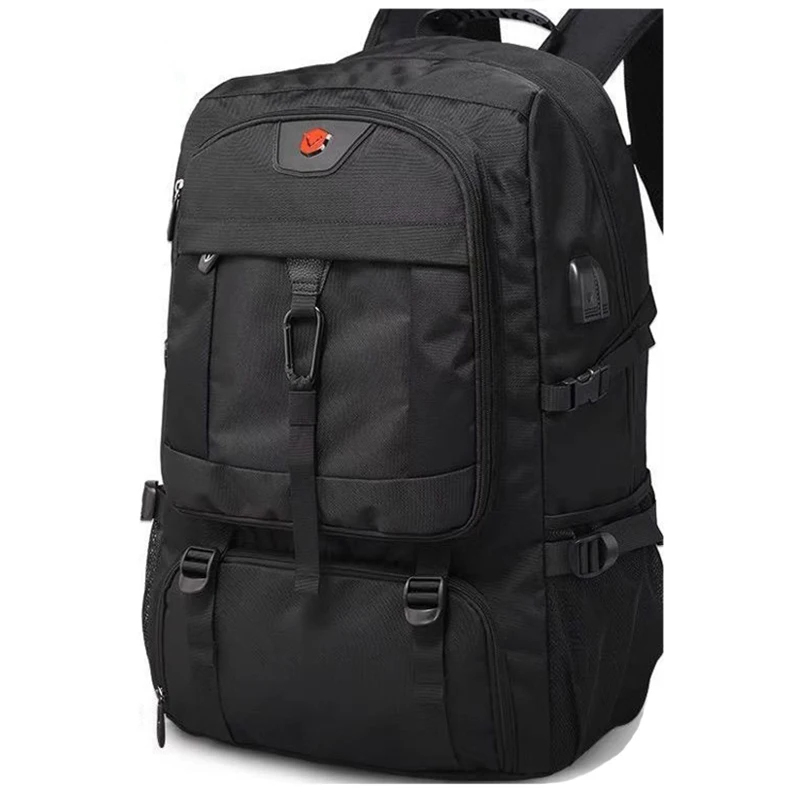
While your needs determine the backpack volume you require, your body proportions influence the maximum comfortable load you can carry:
General Volume Guidelines:
– Day Use: 15-30 liters
– Overnight: 30-50 liters
– Weekend (2-3 days): 40-60 liters
– Extended Trip (3+ days): 55-85+ liters
However, these recommendations should be adjusted based on your frame:
- Petite builds typically feel most comfortable with packs 10-20% smaller than standard recommendations
- Larger frames may comfortably carry packs 10-15% larger than standard
- Regardless of size, most experts recommend carrying no more than 20% of your body weight
14 Inch Leather Laptop Backpack, Brown Leather Backpack, Men's Leather Backpack, Vintage Leather Backpack
Price range: $177.28 through $199.12 Select options This product has multiple variants. The options may be chosen on the product pageCarry On Leather Backpack, Roll Top Leather Backpack
Price range: $77.76 through $96.48 Select options This product has multiple variants. The options may be chosen on the product pageDesigner Mini Backpack, Mini Leather Backpack, Small Leather Sling Backpack, Women's Leather Backpack
Price range: $95.76 through $98.80 Select options This product has multiple variants. The options may be chosen on the product pageDesigner Mini Backpack, Designer Women's Backpack, Mini Leather Backpack, Women's Leather Backpack
Price range: $135.92 through $137.64 Select options This product has multiple variants. The options may be chosen on the product page17 Inch Leather Laptop Backpack, Men's Leather Travel Backpack, Men's Leather Work Backpack
Price range: $106.28 through $143.88 Select options This product has multiple variants. The options may be chosen on the product pageBlack Leather Backpack, Small Leather Backpack, Women's Leather Backpack
Price range: $112.96 through $116.12 Select options This product has multiple variants. The options may be chosen on the product page
When selecting a backpack size, consider both your carrying needs and your physical proportions. A properly sized backpack should look proportional to your body when viewed from the side. Mastering backpack weight management involves not just what you pack, but selecting the right capacity for your frame.
Finding Your Perfect Leather Backpack for Daily Use
While technical hiking packs emphasize adjustability, leather backpacks for daily use balance ergonomics with style. When selecting a leather backpack:
- Apply the same torso measurement principles, though with less emphasis on precise sizing
- Look for padded shoulder straps with adequate width for daily comfort
- Seek designs with at least minimal padding where the pack contacts your back
- Consider weight distribution—even daily essentials can cause strain if poorly positioned
Premium leather backpacks benefit from break-in periods, during which the leather softens and conforms to your body shape. Regular waterproofing and leather bag maintenance not only protects your investment but ensures continued comfort as the materials adapt to your unique physique.
Is Your Backpack the Right Size? Quick Assessment Checklist
Use this 10-point checklist to verify your backpack’s fit:
- Torso Match: The pack’s back length corresponds to your torso measurement
- Hipbelt Position: The hipbelt sits directly on your iliac crest, not above or below
- Shoulder Contact: Shoulder straps make full contact with your shoulders without gaps
- Load Stability: When properly tightened, the pack feels like part of your body during movement
- Weight Distribution: You feel 70-80% of the weight on your hips, not your shoulders
- Strap Clearance: The shoulder straps don’t pinch your armpits or neck
- Sternum Connection: The sternum strap connects comfortably without restriction
- Load Lifter Angle: Load lifters form approximately a 45° angle when tightened
- Movement Freedom: You can look up without the pack hitting your head
- Comfort Check: After 15 minutes of wear, you feel no pressure points or pain
If you answer “no” to any of these points, adjust your pack or consider a different size. Remember: minor discomfort becomes major pain over extended wear.
Questions About Specialty Backpack Sizing
Can I Use the Same Backpack for Both Day Trips and Long Journeys?
While versatility is appealing, there are trade-offs to consider:
A larger backpack can work for both day use and extended trips when properly adjusted and compressed. Look for:
– Robust compression systems that can shrink the pack’s profile when partially filled
– Modular designs with removable compartments or expandable sections
– Balanced frame support that remains comfortable with varied load weights
However, dedicated day packs typically offer better comfort for short excursions because they’re proportioned for lighter loads and often feature streamlined designs with easier access to essentials.
The best compromise often comes from backpacks with thoughtful compression systems and modular components that adapt to your changing needs without sacrificing comfort.
How Should Backpack Fit Change for Different Seasons and Clothing Layers?
Seasonal clothing variations significantly impact backpack fit:
Winter/Cold Weather Adjustments:
– Loosen the hipbelt to accommodate additional clothing layers
– Extend shoulder straps slightly to maintain proper pack position
– Adjust the sternum strap for bulkier clothing
– Consider how reduced flexibility from heavy clothing affects your range of motion
Summer/Warm Weather Considerations:
– Tighten all straps to account for minimal clothing
– Pay special attention to ventilation features
– Consider how perspiration might affect comfort at contact points
Always test your backpack fit while wearing the clothing appropriate for your intended activities. A pack that fits perfectly over a t-shirt might be uncomfortably tight over a winter jacket, while one adjusted for winter layers might slip and shift when worn with minimal summer clothing.

